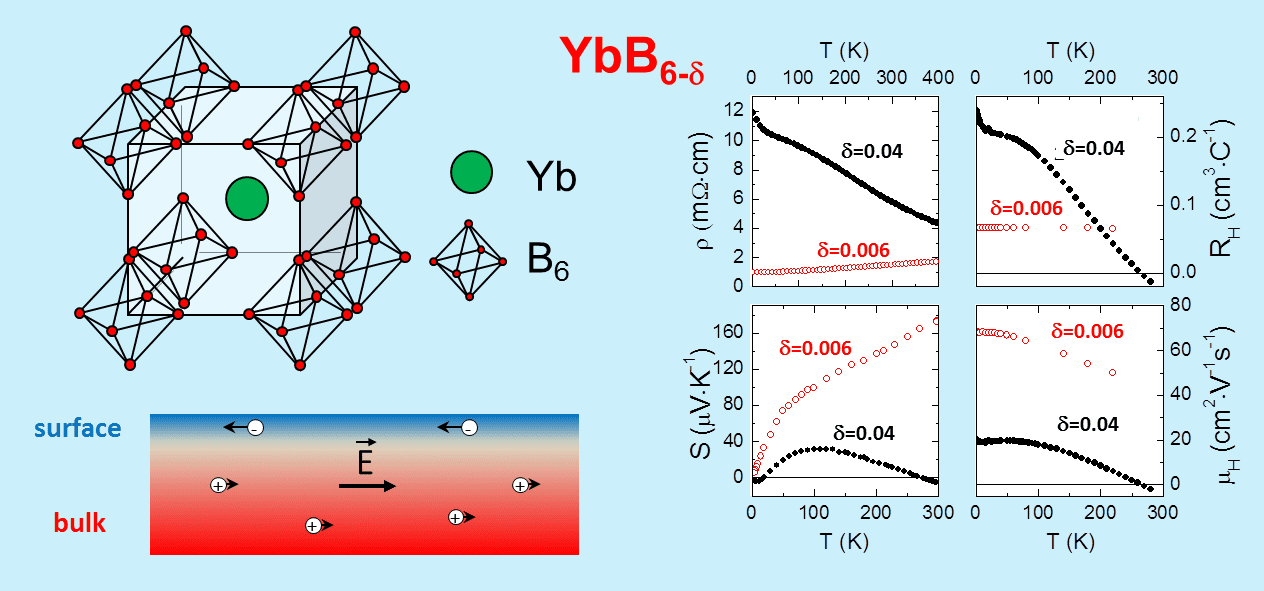The striking similarity in key ingredients for topological insulators (TI) and effective thermoelectrics announced recently by L. Müchler et al. (DOI: 10.1002/pssr.201206411) opens perspectives for searching new materials for spintronic and green energy applications. However, the surface conduction through spin-polarized Dirac states in TI happens to be often hidden by the bulk contribution dominating in the Bi2Se3 family due to numerous Se vacancies in two-dimensional layer stacks. So usage of intrinsic defects to control the electron states in these materials stays a real challenge for the scientific community.
 A possible occurrence of the correlated TI state in YbB6 has renewed interest to this non-magnetic narrow-gap semiconductor with simple cubic structure. Due to intricate relationship between the boron deficiency and electron transport ytterbium hexaboride is traditionally considered as a promising p-type thermoelectric material for high temperature applications. However, the reported inconsistencies in the physical properties of the single crystals grown by various techniques didn’t allow discovering the influence of intrinsic defects on the evolution of the band structure in this compound.
A possible occurrence of the correlated TI state in YbB6 has renewed interest to this non-magnetic narrow-gap semiconductor with simple cubic structure. Due to intricate relationship between the boron deficiency and electron transport ytterbium hexaboride is traditionally considered as a promising p-type thermoelectric material for high temperature applications. However, the reported inconsistencies in the physical properties of the single crystals grown by various techniques didn’t allow discovering the influence of intrinsic defects on the evolution of the band structure in this compound.
Combining the transport and magnetic measurements for the single crystals grown by inductive floating zone melting, the international team of scientists from Prokhorov General Physics Institute of RAS, Moscow Institute of Physics and Technology, Vereshchagin Institute of High Pressure Physics of RAS, National Research Nuclear University “MEPhI” and Frantsevich Institute for Problems of Materials Science NASU has demonstrated that the control of stoichiometry may serve as an effective tool for tuning the parameters of electron transport in YbB6. The rise of boron deficiency from 0.09% to 0.6% estimated from the Yb3+ magnetic contribution decreases the concentration of bulk holes down to 1 carrier per 500 formula units. This allows to resolve surface conductivity from high-mobility electrons with rather low density (n2D ca. 10-10 cm-2), which contribute significantly in charge transport at low temperatures. These surface electrons are shown to be treated as a possible origin of the negative Seebeck effect detected in YbB5.96 below 20K.
The text is kindly provided by Vladimir Glushkov

















